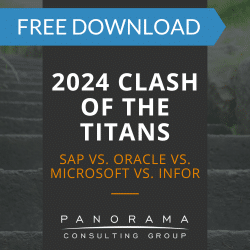As people around the globe seek support from nonprofit organizations, nonprofit leaders must find new ways to staff their teams, expand their offerings, and minimize wait times. For years, the answer was simply to work harder, but now, nonprofits are looking for ways to work smarter.
Nonprofit digital transformation is changing the way nonprofits operate, allowing them to maximize their impact. Today, we’re exploring how nonprofits are leveraging modern digital technology to impact the communities they serve.
Replacing Legacy Systems
Many nonprofits rely on outdated, highly customized legacy systems that only a few users know how to operate. This places a massive burden on the rest of the team, hindering their ability to access reliable data and make important decisions.
Nonprofit software must be intuitive, user-friendly, and accessible to everyone on the team. This is where digital transformation comes in.
Increasingly, nonprofit directors are leading their teams through digital transformation. This often means investing in cloud-based ERP systems and other modern enterprise systems. Platforms like these allow organizations to automate and streamline their back-office operations so they can focus on their public-facing duties.
(Expert Tip: Be sure to hire an ERP selection consultant.)
Using Tech to Find New Talent
As the need for nonprofit services continues to rise, agencies are finding it challenging to keep up with the increased staffing demands. In fact, one report shows that around 42% of U.S. nonprofits have a vacancy rate of at least 20%.
To help find and retain team members, many leaders are turning to cloud-based talent management solutions. Many of these solutions incorporate advanced data analysis, artificial intelligence (AI), and machine learning (ML) tools that offload manual work.
As a result, talent managers can work more efficiently because they aren’t bogged down by day-to-day administrative duties.
Overall, automation is helping nonprofits streamline every aspect of the hiring process, from background checks and offer management to onboarding and performance monitoring.
The 2024 Top 10 ERP Systems Report
What vendors are considering for your ERP implementation? This list is a helpful starting point.
Making Data-Driven Decisions
The modern nonprofit organization must be ready for anything, supported by an infrastructure that can ramp up at a moment’s notice. Nonprofits that pursue digital transformation can become this agile.
Leveraging intelligent data insights, such as resource forecasts, organizations can become more proactive. They can make better decisions about resource allocation, program planning, donor engagement, and more.
For example, modern nonprofit software can recommend the best funding sources and make suggestions to optimize spending.
With a strong financial strategy in place, economic and operational shifts aren’t as disruptive.
Using Generative AI
Generative AI capabilities within ERP and CRM systems can help nonprofit teams increase efficiency and optimize stakeholder experiences.
Take donor engagement, for instance. Without automation, employees could spend hours cross-referencing spreadsheets to determine when someone has engaged with their programs and the extent of that engagement.
The same applies to prospect analysis and outreach. With generative AI, this process takes mere minutes. The software can assemble tomes of donor-specific data, then organize it in a highly accessible format, such as an FAQ guide or another type of marketing collateral.
While nonprofits still have control over the final output, AI can put them many steps closer to where they want to be with their engagement efforts.
Prioritizing the People Side of Digital Transformation
The people side of a project is just as important as the technology side, especially for a nonprofit organization.
As employees question the need for new software and wonder how it will affect their jobs, leaders should ease their concerns. Strategies include:
- Holding company-wide meetings to communicate the benefits of the digital transformation
- Holding one-on-one meetings to address individual concerns
- Keeping activities and conversations focused on the nonprofit’s mission
- Taking trips into the field to see the impact of the organization’s work in action
Nonprofits that press ahead while their team is demonstrating resistance may experience low user adoption. An organizational change management consultant is essential for optimizing the ROI of your technology investment.
Learn More About Nonprofit Digital Transformation
Nonprofit organizations need to operate like well-oiled machines. They must be able to maintain strong donor relationships, support their staff, and make data-driven decisions, all while demonstrating transparency.
Nonprofit digital transformation is the new normal. In the years to come, you can expect an increasing adoption of technologies such as AI-enabled ERP software and modern talent management solutions.
Interested in learning more about how enterprise software can benefit your nonprofit? Contact our ERP consulting team below.














